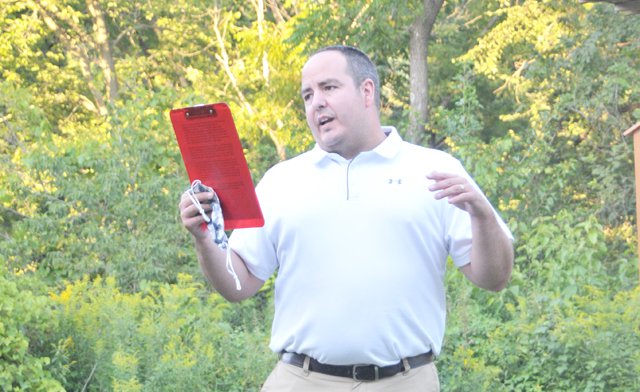CRAWFORD COUNTY - Crawford County Conservationist Dave Troester was on-hand at LaRiviere Park in Prairie du Chien to hand out the county’s annual Conservation Awards. The awards are usually given at a ceremony at the Crawford County Fair which was cancelled this year due to COVID-19. About 50 citizens gathered for the event held on Wednesday, August 19.
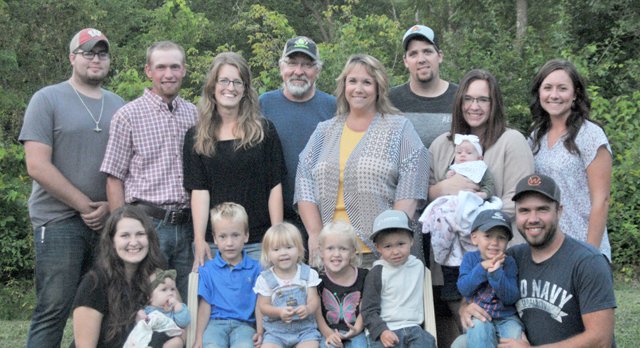

Conservation Farm Family of the Year
“The Crawford County Land Conservation Committee annually selects one farm family to highlight for the successful, conservation-minded operation they run within the county. To be selected as the Farm Family of the Year requires having balance between having a successful operation and putting forth extra effort to protect the environment,” Troester said. “This year’s winner is Dudenbostel Family Farms, consisting of parents Don and Kim, and sons Ian and his wife Hannah, and Evan and his wife Mishaela.”
Don and Kim were surrounded by family at the award ceremony
Don and Kim started farming with his parents, Gerd and Dixie Dudenbostel back in 1988. Their farm along County Road E in Seneca Township was already laid out in contour strips, and they made sure to keep their grassed waterways. A major change came about in 1990, when they began practicing no-till and experimenting with cover crops.
“Wanting to do something to better their pasture and improve their herd, the Dudenbostels began rotational grazing in 1998,” Troester said. “They used NRCS EQIP funding to cover some of the costs of building paddocks. The rolling topography of the farm was ideal for laying out the paddocks and watering systems.”
Kim and Don raised five children on their farm in Citron Valley - Amanda, Ian, Evan, Olivia, and Damian. All of the children helped on the farm growing up until they moved on to different career paths. Ian and Evan chose to come back to the farm in 2013. With the additional full-time help, the Dudenbostels were able to ramp up and expand their grazing operation and implement some additional conservation practices.
“Over the last several years, they have built a new cattle lane and installed 2,100 feet of underground and 9,000 feet of aboveground waterlines. Just in the last few weeks, they completed a major streambank restoration project on Citron Creek,” Troester said. “Don told me they were very grateful for the cost-share funding they received from NRCS, Trout Unlimited, the Prairie Rod and Gun Club, and from the Land Conservation Department.”
When reached on Monday, August 24, Kim Dudenbostel told the Independent-Scout that Don, Ian and Even “were out watering the plantings along the creek – we have to because it’s been so dry.” It seems all the crops and gardens could use a little rain – something we haven’t had to worry about so much in the last few years.
The Citron Creek streambank restoration project was recently highlighted in the Thursday, August 13 issue of the Crawford County Independent & Kickapoo Scoutnewspaper. It can be read online at www.swnews4u.com.
Aside from the conservation work on their farm, both Don and Kim have been strong advocates of agriculture. Kim served as a FSA advisor from 2000-2009, and Don was on the FSA Board from 2010-2019. As a member of the FSA Board, Don was also appointed to serve as its representative on the Crawford County Land Conservation Committee from 2017-2019.
“Don told me recently that he credits his father for instilling in him the desire to be a progressive farmer,” Troester said. “He said he blazed the trail on their farm with innovative practices. Though Don says that not all of his father’s ideas worked out, they did learn from their mistakes.”
Troester said that Dudenbostel is very proud of the family’s use of no-till and cover crops for over 30 years.
“Don and Kim told me they were confident that their conservation efforts will preserve the land so it is better for the next generation on their farm,” Troester said.
For their dedication to conservation farming, the Crawford County Land Conservation Committee is proud to present the 2020 Farm Family of the Year Award to Dudenbostel Family Farms.
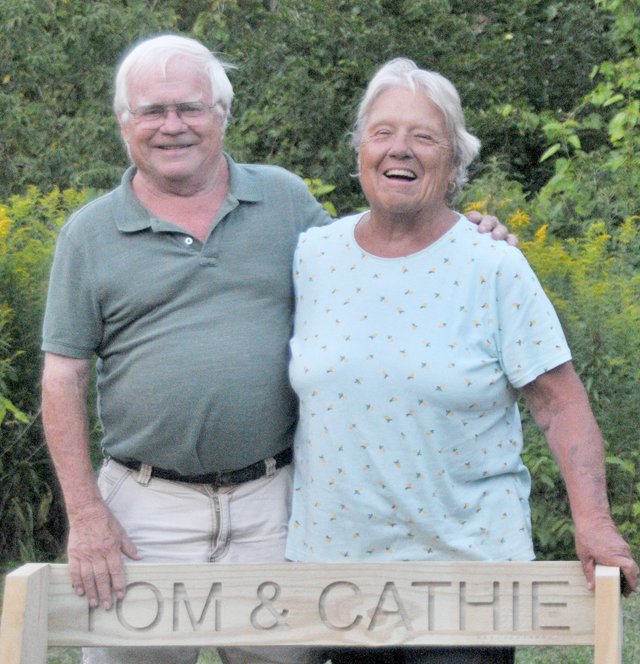

Friend of Conservation
In what was likely one of the livelier acceptance speeches at the ceremony, Tom and Cathie Nelson spoke of their work, and childhood experiences that had led them down the path of their conservation work as adults.
“The 2020 Friend of Conservation Award goes to Tom and Cathie Nelson of Prairie du Chien,” Troester said. “Tom and Cathie have been great advocates for natural resources and youth outreach, and have been a very important asset to Crawford County.”
The Nelsons have lived at their house in Prairie du Chien for over 50 years and have definitely left their mark on the community. Cathie has managed several area restaurants and Tom taught for 38 years at Wyalusing Academy and the Prairie du Chien Public Schools.
“I love living in Prairie du Chien, and have made so many friends,” Tom told the crowd. “I remember when the mayor came to me, asked me to sit on the park board to help revitalize our parks, and informed me that we had no budget. We took the project on, even without a lot of money.”
Tom and Cathie have a love of the outdoors and are proud advocates of outdoor education. They have been key in the development of St. Feriole Island for public use, and many tree-related projects throughout the city.
“One of their first nature projects was in 1992. They did a presentation of a tree replacement program on the island,” Troester said. “A few years later they led a project to plant and/or transplant river birch and maple trees. This led to more involvement in the management of trees throughout the city’s parks.”
In 2002, the Nelsons planted the first tree in Lucky Park to honor Lucky the Carp (the star of the annual New Year’s Eve ‘Dropping of the Carp’ event).
Cathie told the story about where her inspiration for Lucky the Carp had come from.
“When I was a girl, I went out fishing with two boys, and I was the only one that caught a fish,” Cathie said. “So I took the fish home in a bucket, and my grandpa came over and saw it and asked what I was going to do with it. I told him I didn’t know, because my mom wouldn’t cook fish, so he asked if he could have the fish to use as fertilizer for trees.”
Cathie said that her grandpa would take fish, chop them up and then bury them under trees he was planting.
“Tom and I do the same thing to this day,” Cathy said. “But we always take the head and point it towards the river.”
This annual tree planting brings students to the park to learn about trees and the roles they play in nature. They also helped develop the St. Feriole Island Memorial Gardens in 2005 to promote the development of formal gardens, landscape, native vegetation including trees and shrubs, to accent the natural beauty of the island.
Other tree projects on the island include the pair’s 2010 ‘Trees with a History’ project. Trees were planted in honor of notable people with strong ties to nature and to the city of Prairie du Chien. This includes Ben Logan, Joyce Kilmer, John Muir, Henry David Thoreau, and Aldo Leopold, among others. A few years later Tom and Cathie established a ‘Trail of Presidents,’ which is rows of alternating red and white oak trees honoring the presidents and other dignitaries that have lived in or visited Prairie du Chien. Two blue spruce on the ends of the rows complete the representation of our flag colors.
During the presentation, Cathie, who grew up in New Ulm, Minn., remembered reading a poem in the sixth grade that formed the basis of her lifelong love of trees. Cathie actually read the poem “Tree” by Joyce Kilmer aloud to the event participants.
In 2012, Tom and Cathie partnered with the local schools to create an Arbor Day Program geared towards first-graders to introduce them to the importance of trees. Through this program, kids create their own stories of trees in the Prairie du Chien community.
“Having helped out with this event, I can say it is truly inspiring to see how excited Tom and Cathie are to teach these youngsters about trees,” Troester said.
In the last few years, the Nelsons have helped develop an educational tree farm to provide science students with a diversity of trees to observe and learn from. They also partnered with Cabela’s, the Rotary Club, and the Prairie du Chien Parks Department to do a tree planting project, resulting in over 60 trees being planted around the area. They also manage the community Memorial Tree Program, providing individuals or groups the opportunity to plant trees in remembrance of someone.
“As you can see, the Nelson’s love their trees, but more importantly, they love sharing their love of trees with others,” Troester said. “For that reason, the Crawford County Land Conservation Committee is proud to present the 2020 Friend of Conservation Award to Tom and Cathie Nelson.”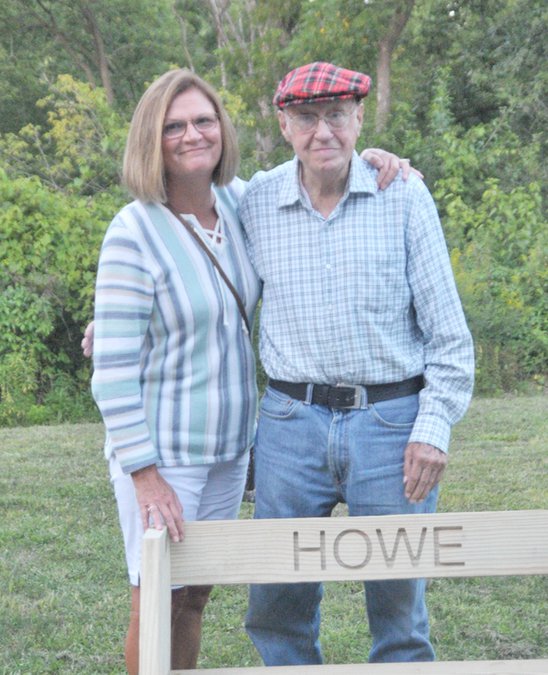

Conservation Legacy
Retired Courier Press newspaper publisher, and lifelong Crawford County resident Bill Howe received the Conservation Legacy Award. The award was presented at the Crawford County Conservation Awards ceremony held Wednesday, August 19, at LaRiviere Park in Prairie du Chien.
“I’m proud to be a part of the wonderful place in the Midwest,” Howe said. “And I’m glad to see that people are out enjoying it.”
Howe talked about how land use and the environment are tied to the history of our area.
“When I go out on the river, and see the eagles soaring in the air, I am proud of the conservation progress that has been made over the years,” Howe said. “When I see the eagles, I think about how banning DDT allowed them to make a come back and to flourish.”
Another local place Howe discussed was the quarry at Pike’s Peak. He remembered that the rock used to build the wing dams on the Mississippi had been quarried there. He also remembered, as a boy, how citizens could take a steam boat from Prairie du Chien to the Wisconsin Dells, in order to experience the Lower Wisconsin River.
In presenting the award, Crawford County Conservationist David Troester shared some remarks.
“The Crawford County Land Conservation Committee occasionally decides to award a Conservation Legacy award to a group or an individual that has left a long-lasting impression in our county,” Troester said. “This year’s award goes to William Howe, an individual who has spent many decades advocating for our natural resources here”.
“Bill had the good fortune to grow up and live his entire life on the banks of the Mississippi here in Prairie du Chien. He told me that living near the river and the adjoining bluff lands was the best influence and education a person could have to help appreciate how important natural resource conservation is,” Troester continued. “Bill’s father treasured the area, and took him along on his duck hunts and many other outdoor activities. Bill came to love the river and the natural beauty of the area.”
Troester explained that being part of a newspaper family in Prairie du Chien, Bill was exposed to many organizations and people passionate about the environment and conservation. His father knew environmentalist, conservationist, and cartoonist Ding Darling, who worked for the Des Moines Register in Iowa. Ding would come to Prairie du Chien to give presentations.
“While in high school, Bill remembers even helping with material for one of Darling’s presentations,” Troester said. “He would be at their house, and talk of his passion for protecting the land and preserving it for future generations. Bill says that really stuck with him.”
Troester said that another major influence on Howe was Aldo Leopold. Leopold also visited Prairie du Chien, and observed changes to the river due to the lock and dam system.
“Leopold advocated for greater public involvement in political environmental decision-making,” Troester said. “Bill says that need carries on still today.”
Troester went on to say that as Howe’s role in the newspaper grew, he became more and more exposed to people and groups passionate about the environment and conservation. There were local folks, like Larry Knutson, who were passionate about preserving area trout streams.
“Bill and Larry would go out, clean them up, and advocate for good management with the landowners,” Troester said.
Troester said that Howe was able to attend and write about public meetings to help promote understanding and raise interest in natural resource topics.
“It became clear to him, however, that he also wanted to become an active member of organizations that could provide the public opportunities to have their voices heard by legislators making environmental/ conservation policies,” Troester said.
Howe has been a member of the Wisconsin Conservation Congress for over 50 years. As a citizen elected delegate, he would help advise the Natural Resources Board and the Wisconsin Department of Natural Resources on responsible management of the state’s natural resources.
Howe also served for 36 years on the Wisconsin and Minnesota Boundary Area Commission. This group, made up of five governor-appointed members from each state, served as a watchdog commission to review progress of studies, raise new concerns, and most importantly allow for public input. They served as a liaison between the public, and the state and federal agencies that managed the rivers and adjoining lands.
As an active member of the Prairie du Chien Rod and Gun Club, Howe emphasized the concept that people who respect the environment and understand the need to help manage how people can conserve it, can do so while still enjoying the use of it for hunting and fishing. Howe has also been active with the Prairie du Chien Historical Society. He points out that land use and the environment are tied to history.
“Bill told me, the pleasures he has experienced enjoying a beautiful river and area lands is an opportunity he wants future generations to be able to enjoy,” Troester said. “He says that will only happen if people know and care about it, and feel it important enough to bother to be engaged.”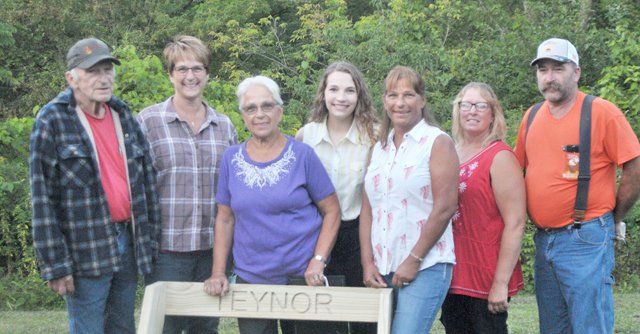

Conservation Educator
This year’s Conservation Educator Award goes to Donna Teynor. She grew up near Patch Grove, but moved to the city of Prairie du Chien in 1975, and has always had an appreciation of nature and especially loved gardening. She was actually one of the founding members of the Grant County Master Gardener Association, and was a member for five years before co-founding the Crawford County Master Gardeners, where she also served as President for 10 years.
Donna has served as their Lead Training Facilitator since 2000, teaching hundreds of area residents about gardening and conservation, and the importance of planting native species.
“The Crawford County Land Conservation Committee’s goal of maintaining a conservation-minded atmosphere in Crawford County is no easy task,” Troester said. “With issues such as conversion to all row-crops, non-resident land ownership, and invasive species threatening to change our landscape, it is critical that positive conservation messages are provided to our residents, especially our youth, through outreach and education.”
Teynor’s passion has also led her to helping beautify the City of Prairie du Chien. She was a founding member of the St. Feriole Island Memorial Gardens, she weeds and tends the pollinator planting in the round-a-bouts, plants and waters flower baskets along the downtown area, and also at some local churches.
She recently worked with the Prairie du Chien High School on the creation of several rain gardens, and has spent this spring/ summer growing 1,200 potted plants for these gardens. In 2018, she started the ‘Kids in the Garden’ program which has had hundreds of participants each year. This program was awarded the State of Wisconsin Parks and Rec Youth Award.
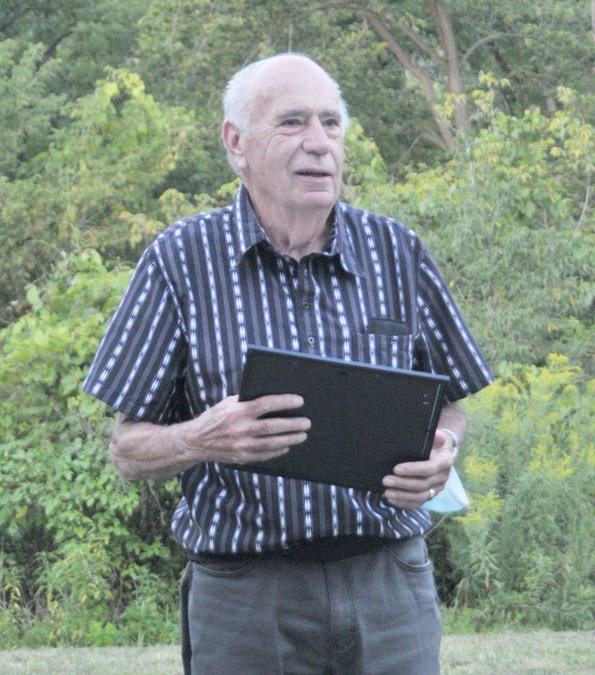

Conservation Leadership
Henry ‘Buzz’ Esser recently retired from the Crawford County Board. While serving on the board, Esser also served as chairman of the Land Conservation Committee.
“A good leader makes other people feel important and appreciated. A true leader excels in motivating people and bringing out the best in them. A successful leader creates objectives and sets the pace on how to accomplish them,” Troester said. “A man who checked all of these boxes during his time on the Crawford County Land Conservation, Planning, and Zoning Committee is Henry Esser, or Buzz, as everyone knows him.”
As a Prairie du Chien resident, Esser was elected to the Crawford County Board of Supervisors in 2010. Over the years, he served on several committees, including the Highway Committee, the Delinquent Tax Committee, the Veterans Service Committee, and the Aging and Disability Committee. He was also appointed to serve as Chairman of Land Conservation Committee.
“When I started in this position back in 2011, Buzz was already serving as the Land Conservation Committee Chair. After hiring me, I learned he that was excited that a “local” guy was filling the position,” Troester said. “He made me feel welcomed, and spent numerous hours trying to help me learn the ropes of the department. I could always count on a weekly visit from Buzz to check in on the department, find out how we were doing professionally and personally, and often provide us with a sweet treat. Peanut butter cups were his favorite- and mine.”
When Troester handed Esser his award, Esser gave “one last bag of peanut butter cups.” Troester was all smiles.
“One of Buzz’s biggest strengths as a leader was his ability to facilitate discussion between people with very different views on certain issues,” Troester said. “He recognized people’s differing opinions, and tried to work out compromise when he could.”
Esser led the Conservation Department through many changes over the years. There were the many ordinance revisions, Land and Water Plan updates, the aerial cover crop project, the tri-county Driftless Area Water Study, and the POWTS Maintenance Program, just to name a few.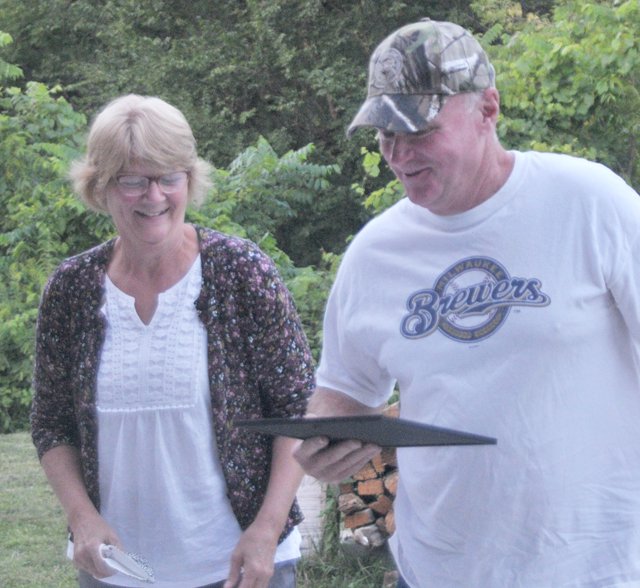

Conservation Forestry
Dave Troester said that the Crawford County Land Conservation Committee recognizes landowners that take active roles in managing their properties. The Conservation Forestry Award is presented to landowners that manage their woodlands for reasons other than simply maximizing their profits off of the land.
“A great example of this is the work done by Tim and Denise Moran,” Troester said.
Lifelong area residents, the Morans have owned their property along North Irish Ridge Road in Marietta Township for 30 years. The property is a good mix of woodlands and agricultural land. They raise beef cattle on the property.
Their woods have been enrolled in the Managed Forest Law (MFL) program for over 30 years. They wanted a program that would help them manage their woods to ensure its sustainability and productivity.
“Over the years, Tim and Denise have worked closely with DNR foresters. At first it was Gary Harden, who prior to his retirement a few years ago, helped them navigate through the program,” Troester said. “Recently, the Morans have been working with Christine Walroth and Joe Schmaedick on the MFL management of the property. Tim and Denise told me they were very thankful for the expertise and professionalism that the DNR Forestry Staff have provided over the decades.”
“Very recently, the Morans received Wisconsin Forest Landowner Grant Program funding to conduct brush management in their timber to improve the diversity of their woods, allow more light to the forest floor, and improve wildlife habitat,” Troester explained. “The flora and fauna of their property are surely thankful for the efforts the Morans have put in. They are actively managing their property for invasive species, a truly daunting task. The emerald ash borer is one of their biggest concerns with their property.”
Aside from their forestry work, the couple also has implemented conservation practices on their farmland. They have constructed a retention pond, and have utilized silt fencing where needed to reduce runoff and erosion.
When Troester asked them why conservation was so important to them, the Morans gave him a plain and simple answer.
“We are conserving the land for our grandchildren.
